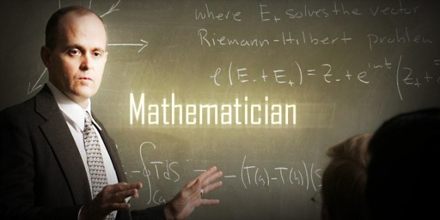Mathematicians are often regarded as the architects of abstract reasoning, wielding numbers and symbols to unravel the mysteries of the cosmos. Their work extends far beyond mere calculations; it encompasses a rich tapestry of logical thought, creativity, and relentless curiosity. But one wonders, could a mathematician ever get lost in their equations? What if their quest for solutions leads them into a labyrinth of complexity where even the simplest truths elude their grasp? This nuanced relationship between clarity and complexity forms the crux of mathematical inquiry.
To explore this intriguing domain, we begin by examining the historical context of mathematics and its luminaries. The evolution of mathematics can be traced back to ancient civilizations, where cultures such as the Babylonians and Egyptians laid foundational principles. These early mathematicians, though often nameless, sparked a fervor for understanding the universe through numerical relationships. The introduction of zero, the development of geometry, and the formulation of algebra were pivotal milestones, establishing a bedrock for future exploration.
As we traverse through history, we encounter prodigious figures whose contributions have been monumental. Euclid, celebrated as the “Father of Geometry,” encapsulated the principles of spatial understanding in his seminal work, “Elements.” His rigorous approach to proofs and definitions not only structured the field of geometry but also sowed the seeds for deductive reasoning that pervades mathematics today. However, could it be that Euclid’s axioms hold a paradox that challenges our current understanding? Are there geometries yet undiscovered that lie beyond the Euclidean paradigm?
Another iconic mathematician, Archimedes, transcended the limitations of his time with his ingenious manipulation of geometric forms. His methods for calculating areas and volumes paved the way for integral calculus, a discipline that remains vital in contemporary mathematical applications. Archimedes’ principle of buoyancy introduced a synthesis of mathematics and physics that echoed through the corridors of time. However, his relentless pursuit of knowledge led him to contemplate the infinite—a notion that continues to perplex scholars. What lies at the convergence of the finite and the infinite? This question invites us into a deeper exploration of mathematical philosophy.
Fast forward to the Renaissance, a period characterized by a resurgence of learning and inquiry. Mathematicians such as René Descartes and Isaac Newton revolutionized the landscape by linking algebra and geometry through the Cartesian coordinate system. This groundbreaking innovation not only enhanced mathematical communication but also facilitated breakthroughs in physics and engineering. However, one might ponder: did Descartes foresee the complex interplay between mathematics and reality as we experience today?
Moreover, the 18th and 19th centuries heralded the emergence of abstract algebra and number theory, with mathematicians like Carl Friedrich Gauss and Évariste Galois pushing the boundaries of what was thought conceivable. Gauss’s meticulous work on prime numbers laid the groundwork for modern cryptography. Prideful mathematicians of today often grapple with the implications of Galois theory, which delves into the solvability of polynomial equations. The open questions surrounding these areas remain a fertile ground for mathematical inquiry, with enigmas yet to be deciphered.
In contemporary society, mathematicians wield their expertise across diverse domains. They contribute to fields as varied as computer science, finance, biology, and engineering. Their ability to model complex systems and analyze vast datasets has transformed industries. For instance, data analysts utilize statistical methodologies to extract insights from empirical evidence, bridging the gap between theory and practice. Yet, amidst this practical application, does the essence of pure mathematics risk being overshadowed?
The question might be raised: Is there a dichotomy between pure and applied mathematics? Pure mathematics—the pursuit of knowledge for its own sake—thrives on abstraction and theoretical frameworks. Conversely, applied mathematics seeks to address real-world problems, often sacrificing the elegance of theory for pragmatic solutions. This tension fosters an environment rich with debate and dialogue. Are mathematicians primarily classifiers of reality, or creators of it?
Moreover, the landscape of mathematics is continually evolving as technology reshapes our understanding. The advent of artificial intelligence and machine learning has initiated a new era of computational mathematics, allowing for intricate simulations and modeling unprecedented challenges. Mathematicians now engage in interdisciplinary collaborations, forming alliances with scientists and engineers to tackle complex issues, from climate change to public health crises. But this leads to a poignant reflection: in our quest for answers, do we risk losing the artistry inherent in the practice of mathematics?
As we contemplate the role of mathematicians in the modern world, it is crucial to recognize their unique ability to bridge abstract thought with tangible applications. They exemplify the delicate balance between rigor and imagination, navigating the fine line between certainty and ambiguity. The challenges they face are not merely academic; they resonate with the fundamental questions of existence. What truths lie hidden within the folds of mathematics? How do these truths impact our understanding of the universe?
In conclusion, mathematicians stand as vital contributors to the intellectual heritage of humankind. Their relentless pursuit of knowledge defines not just the boundaries of their discipline but also informs our understanding of the world. Whether through the lens of history, philosophy, or contemporary applications, the journey through mathematics is one imbued with wonder and complexity. The playful inquiries regarding their challenges perpetually inspire reflection, urging us to embrace uncertainty and foster a deeper appreciation for the enigmatic nature of mathematics. As we explore the continuum of mathematical thought, we find that the only certainty is the quest itself—an adventure without end.












